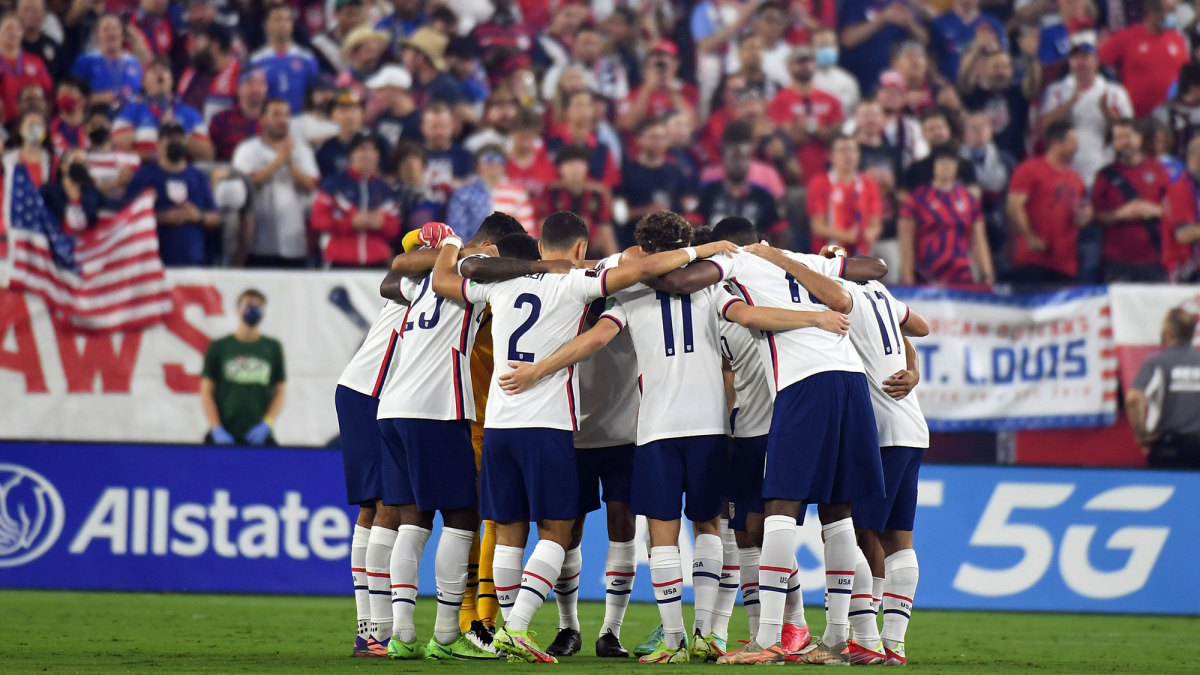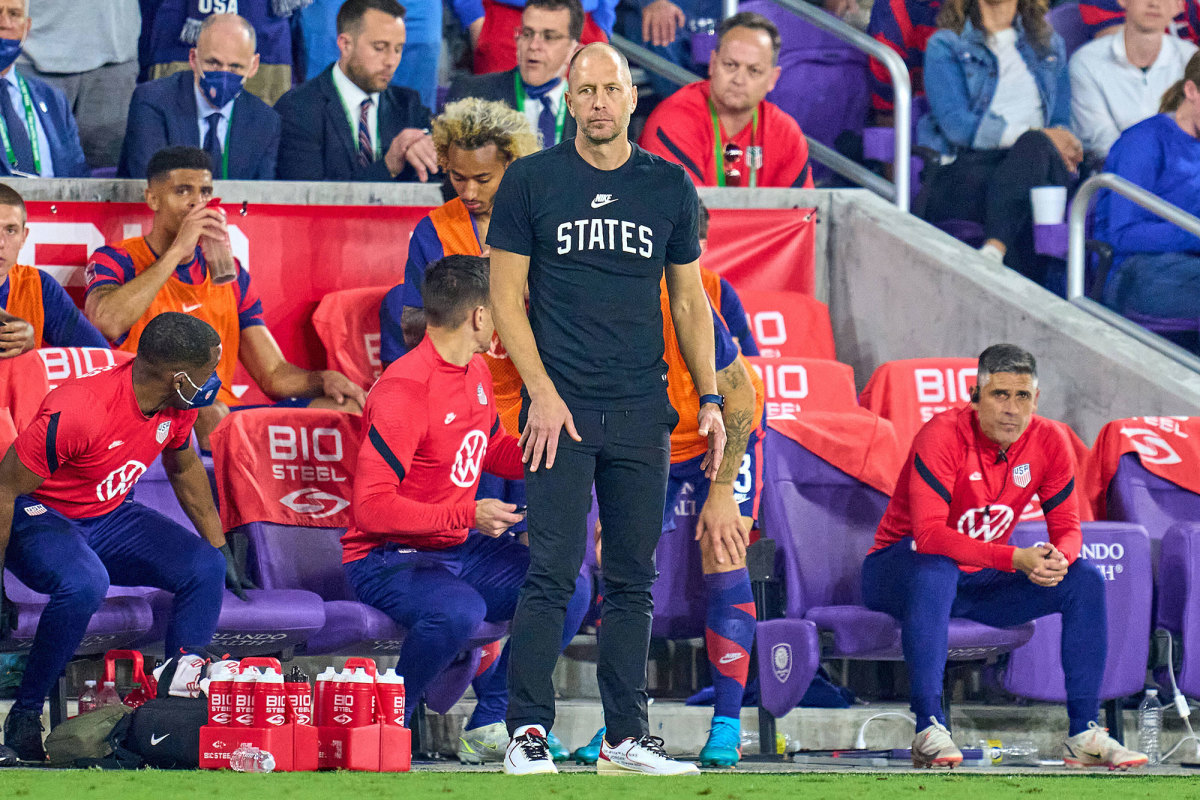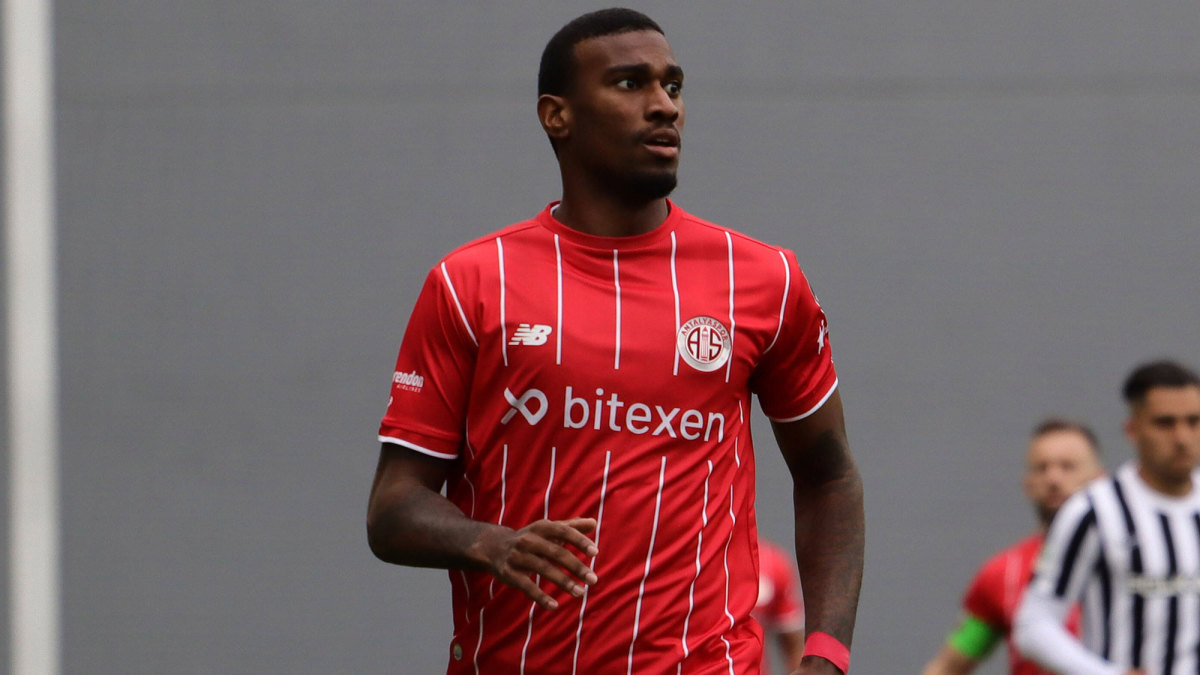USMNT Balances Collective Aim With Individual Ambition As World Cup, Roster Cut Loom
CINCINNATI — Three weeks later, the agony still echoes.
“I get the chills whenever someone asks me the question,” Walker Zimmerman said Monday.
Twelve months ago, no one would’ve considered Zimmerman and Miles Robinson, two MLS lifers with a combined 16 senior caps, likely World Cup starters. But Robinson enjoyed a dominant Concacaf Gold Cup, Zimmerman blossomed during qualifying and, suddenly, they appeared to be atop the American depth chart. Coach Gregg Berhalter paired the center backs in each of the U.S. national team’s final four qualifiers.
The landscape shifts quickly at the highest level. And then it shifts again.
On May 7, Robinson went down after trying to change directions during Atlanta United’s MLS match against the Chicago Fire. He wasn’t touched, but the harrowing severity of the moment was obvious as the 25-year-old gestured toward his left ankle and punched the artificial turf field.
“I vividly remember getting the text from one of my friends who was at the Atlanta United game. I didn’t have it on and they're like, ‘Bro, Miles just went down—looks bad,’” Zimmerman recalled. “I immediately pulled up Twitter, tried to find the video and obviously saw his reaction, saw the immediate responses, and my stomach just completely sank.”

Robinson’s Achilles tendon was ruptured on the play and with it, his World Cup prospects almost certainly vanished (the U.S. opens the tournament Nov. 21). Zimmerman, of rival Nashville SC, sent cookies to his national team colleague on the day of his surgery, pledged “consistent” support and, inevitably, pondered how tenuous big plans can be. Athletes typically prefer to live day-to-day and play-to-play. But that can be a tough six months out from the dream of a lifetime. A little anxiety is natural.
“It's been a little difficult because those thoughts do come into your mind for one of the first times in your career. … It’s hard to fight that, but you have to. You have to keep training hard. You have to keep playing hard,” Zimmerman said here in southwest Ohio, where the U.S. is opening the first of its two pre–World Cup camps.
“It’s important that we address it—we talk about it with our mental coaches, our regular team coaches, and really process it and realize, ‘Hey, that's not the way to go,’” he continued. “The way to think is, ‘How can I become the best player I can be by November?’ And in order to do that, you have to train hard, play hard, continue to push yourself. Because that's what's gotten you here in the first place. So [it’s] difficult, but I think it’s coming to that realization that you can't change what you've been doing.”
The U.S. has qualified for the World Cup. A team representing the country will play in Qatar. But no individual player is certain to participate. This young squad has an established core, certainly, and its well-known members will go if healthy. But injuries and illness happen to everyone, and the stakes are rising as the timeline tightens. Beyond the core, there are those whose World Cup fate depends on so many other variables, from their own health and form to competition from within the U.S. ranks. And behind them, the wild cards: unexpected risers or late bloomers who might make the most of a surprising surge or one, ephemeral chance.
“We are building something,” Berhalter said this month. “There is a core group that we are building and we are developing, and we've done a good job of that. But around the edges there is room, and if a guy’s in form and doing a great job, I can expect him to make a case to be on the [World Cup] roster.”
Berhalter has stressed repeatedly that this camp, which will include friendlies against Morocco (Wednesday) and Uruguay (Sunday) and then Nations League matches against Grenada and at El Salvador, won’t determine any World Cup spots. Considering how much can change on one play, not to mention in six months, any other approach would be foolish. Several significant members of that U.S. core, such as winger Gio Reyna, goalkeeper Zack Steffen and defender Sergiño Dest aren’t even here. Others will have something to prove this fall regardless of their June performances.
But they all have Qatar on their mind. It’s impossible not to, as this camp is geared toward preparing for the tournament. From cementing chemistry and tactics to a glut of media and marketing responsibilities, the World Cup will be the ever-present backdrop for the next two-plus weeks. Recent U.S. camps were about competing and qualifying. They were a bottom-line, high-stress proposition geared entirely toward winning the day. This one isn’t about results. It’s about balancing the here and now—the need to “train hard, play hard”—with plans, hopes and dreams for the future.
“All I can say is, I understand where these where the guys are at. I feel for them,” said Berhalter, a former defender who made one World Cup roster as a key contributor (2002) and another following a teammate’s injury (2006).
“This camp isn’t determining who’s on the team. We’re going to have much harder conversations after September, and that’s where it’s going to get a lot more difficult, I think for everybody. But we’re focused on creating a strong group—guys that are are supporting each other. Because I know the best way to perform well at the World Cup is to have a strong team spirit.”

Berhalter’s focus on culture and chemistry is well-known among his players, and it should ensure that anyone trying to catch the coaches’ attention with something selfish—something that might fall outside the team’s collective structure or approach—will get noticed for all the wrong reasons. In other words, like Zimmerman suggested, the best way to book a ticket to Qatar is to stick with what you’ve been doing. There’s a belief on this team—a refrain of “brotherhood”—that their unprecedented ambition and collective commitment to elevate U.S. soccer will compensate for youth and inexperience. That can’t change now. World Cup invitees will have leaned into what’s been working.
“We're a team, you know? I'm part of the team now, pretty much. I don't see [this camp] as a tryout. I'm just going do my best and whatever happens, happens,” said defender Joe Scally, who’s 19 and still looking for his first senior cap.
“I'll go back to the brotherhood and the concept of the team over over the individual,” added Paul Arriola, the FC Dallas forward whose fluctuating form is sky high at the moment. “I believe if I can help the team in the right ways, like I've played my part, [then] I'm here for a reason. Of course you want to show your best. But the the main thing is the collective, right?
“It’s not necessarily about going out there and scoring two, three goals by yourself,” Arriola added. “If that happens, I’m going to be crying of happiness. But at the same time, I want to be a part of the team. I want to make sure I’m doing the right things to help the team succeed.”
There’s still no final decision about World Cup roster limits. Berhalter has said that he continues to believe FIFA will expand squad size from the traditional 23 to 26. Although there are examples of coaches bringing players to World Cups for team chemistry reasons, or to offer promising future stars a taste of the big stage, Berhalter hasn’t been a fan of passengers. He typically expects every man in a given camp to be ready and able to contribute. In addition, the reduced time between first-round games—a World Cup group stage typically lasts 11 days, but it’ll be nine in Qatar—means greater potential for lineup rotation. Every player is going to have to be World Cup–ready.
Berhalter will face a few challenges juggling timelines and perspectives as well. He and his players will be facing far more questions about Qatar than about Morocco or Grenada. Meanwhile, he’ll have to assess Scally and other relative newcomers, like Cameron Carter-Vickers, Erik Palmer-Brown, Malik Tillman and Haji Wright (CF Montreal midfielder Djordje Mihailovic was ruled out Monday with an ankle injury), while working with the established group on fine-tuning some World Cup details. That differs from the past year, when the focus was entirely on the next match.

“We want to sit with the group and talk about some of our goals for the World Cup, because once you’re there, you don't have that long a period,” Berhalter said when unveiling the June roster. “So this time will be important. We will look at, most likely, another formation in one of the games. And then we’ll continue to emphasize some of our strengths.”
Sporting bright green hair for reasons he refused to divulge Monday (it was a suspiciously Seattle Sounders’ shade of green), defender DeAndre Yedlin said, “We’re getting together as a group, which is obviously huge. A lot of things that people don’t understand about national teams is you’re gelling together for about 10 days at a time, so it’s really hard to build that chemistry. So any time you do get a chance to get together, it’s massive. That’s the main thing, is just continue to build together, continue to get this group of players together and the more we are together, the stronger we’ll be come November.”
But this group, as constituted, won’t be together then. Some will make it that far; others won’t. You can’t avoid injuries by playing to avoid them, and you can’t make a World Cup team by trying to too hard to stand out, overthinking it or looking too far ahead. That’s the intriguing challenge facing these players here and then in Kansas City, Austin and San Salvador. Despite those four games around the corner, this camp’s final results won’t really be known until November. They have to prepare for then by rising to the occasion now.
“We’re competing to be on the field in that sense of keep building, keep growing. I mean, obviously looking ahead for six months, and we all want to be on the flight to Qatar, for sure. But I think for us each day, each game matters. And we’re focused on the now more so than six months from now,” midfielder Kellyn Acosta said.
Yedlin is the only player on the current roster with World Cup pedigree. He was a 20-year-old, second-year Sounder with four U.S. caps when Jürgen Klinsmann unexpectedly brought him to Brazil.
“It’s an experience that you definitely don’t want to get left out of, and unfortunately some guys have to get left out,” Yedlin said Monday. “I know the next months, guys will definitely be a little bit nervy about, ‘Oh, am I going? Am I not?’ But at the end of the day, the most important thing is that you stay present and continue to do what we do, because that’s what got us here in the first place.”
More Soccer Coverage:
